Welcome to Part 2 of our exploration of the Niavaran Complex, a remarkable historical and cultural gem nestled in the north of Tehran. For those of you who haven’t read the first part, you can access it here. In this 2nd and final part in Parsi Tours’ blog, we will continue our journey through this magnificent complex, delving deeper into its fascinating history, exquisite architecture, and the rich cultural heritage it holds. Also don’t forget to visit our Iran Tours page for unforgettable travel experiences.
The Split-level Floor
This section of Niavaran Palace belonged to the youngest member of the Pahlavi family and is referred to as the “Leila Pahlavi Room.” It also includes Farah Diba’s work room, as well as a collection of Mohammad Reza Shah Pahlavi’s military and personal attire, which remains on display. The floor also houses valuable and historical artifacts from India, including ancient carvings of Buddha statues and Indian ivory works. On the staircase leading to the second floor, you can observe a painted depiction of Karimkhan Zand’s court from 1192 AH.
The second floor of Niavaran Palace
On this floor, there are bedrooms, private rooms, and a mid-day rest room. Shah and Farah’s bedroom leads to Farah’s make-up room and Farah’s personal clothes room, among which local clothes and needlework of Baluchistan can be seen.
Farhanaz Pahlavi and Alireza Pahlavi’s study, bed, and living room are also located on this floor. Each of these rooms has separate sanitary facilities. In Alireza Pahlavi’s room, a collection of naval insignia can be seen.
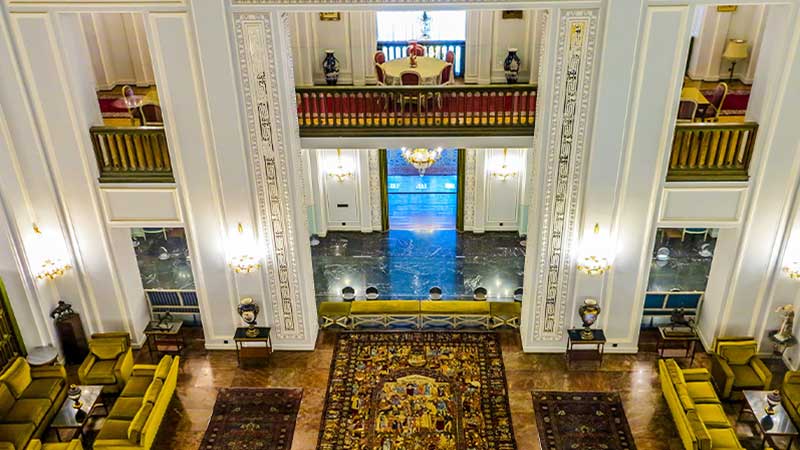
View from the second floor of Niavaran Palace
In the living room on the second floor, there is a desk in the style of Louis XVI, which has historical value, and in the Nimrozi room, there are carpets with the faces of Taj Al-Muluk and Reza Khan.
Museums and other parts of the Niavaran historical cultural complex
Apart from the Niavaran exclusive palace building, there are other sections and museums in the Niavaran complex that are worth visiting. Most of these parts are now prominent museums with cultural and historical works. In this part, we will introduce these sections.
Niavaran Palace Blue Hall
This hall is located on the north side of Niavaran’s exclusive palace, and its surroundings are covered with seven-color tile panels. Over time, due to rain, the tiles of this hall have been seriously damaged.
The Blue Hall has an area of about 350 square meters and is located in the area of Niavaran garden. The blue tiles and the beautiful water feature in front of it are the reasons why the hall has earned this name. In this hall, there are two old French Coblen paintings from the 17th and 18th centuries. In the Blue Hall in 1978, the New Year celebration was held with the presence of Jimmy Carter, the President of the United States at the time. Nowadays, clothing exhibitions are held in this hall.
Sahebqaraniyeh Palace and Hozkhaneh Museum
The palace of Sahebqaraniyeh remains from the reign of Naser al-Din Shah Qajar. In 1267 A.H., on the occasion of the beginning of the 31st year of his reign, Naser al-Din Shah named himself Sultan Sahebqaran and ordered the construction of a mansion with the same name in Niavaran Garden.
In this mansion, various parts such as the dormitory, interior, and harem were designed and installed by Hajeb al-Dawlah, but Muzaffaruddin Shah and Ahmad Shah made the harem part of the palace smaller.
After the fall of Qajar, the mansion of Sahebqaraniyeh was uninhabited for a long time and was not paid attention to. At the beginning of Reza Khan’s reign, Saadabad Palace was in the center of Shah’s attention, and until the marriage of Mohammad Reza Pahlavi with Fawzia, Sahebqaraniyeh mansion remained abandoned.
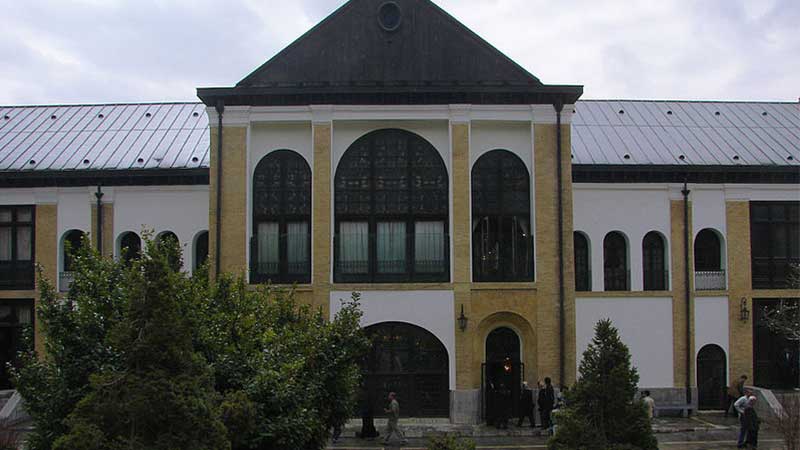
Sahebqaraniyeh Palace in Niavaran Complex
After that, in order to host his guests for the wedding of Mohammad Reza Shah, Reza Khan ordered the destruction of parts of this palace and the renovation of the Sahebqaraniyeh mansion. It took eight months to restore and decorate the inside of the palace, but in the end, the celebration was not held in this palace. During the reign of Mohammad Reza Shah Pahlavi, the interior architecture of this palace underwent many changes. After the revolution, the palace of Sahebqaraniyeh was completely renovated, and its use changed to a museum. This palace is located at a distance of 900 meters from Niavaran exclusive palace.
Among the most prominent historical works in this palace are paintings of Qajar princes, photos of Naser al-Din Shah, the constitutional decree signed by Muzaffar al-Din Shah in 1324 in this same palace, and pictures of constitutional dignitaries. Jahan Nama Hall or Hall of Mirrors is also located in this palace. In the northern part of Sahebqaraniyeh Palace, there is the work desk of Mohammad Reza Pahlavi, and on the walls of this part of the palace, the image of Sheikh Sanan Divan Atar Assembly, engraved on silver, stands out.
In parts of the main room of this palace, old hot and cold weapons from the Zandiya and Qajar eras have been installed, and the floors of the halls have been decorated with Tabriz and Kerman carpets. In this mansion, a collection of photos of the heads of foreign countries and gifts from their governments are displayed.
Hozkhaneh Museum is located in the basement of Sahebqaraniyeh Palace, in its rooms, Qajar era fabrics, pencil cases, and works of calligraphy and painting by Iranian artists are exposed to the public. The beautiful decorations of Hozkhaneh’s interior architecture and outstanding paintings, including the Hozkhaneh painting by Kamal al-Mulk, have turned this part of the palace into one of the most spectacular parts of the Niavaran collection, but unfortunately, at the time of writing this article, due to pathological studies on the building of this palace, it is possible there is no visiting it in near future.
Koushk-e Ahmad Shahi
Ahmad Shahi Koushk was built by the order of Ahmad Shah Qajar for the Shah’s summer resort and was renovated during the reign of Reza Shah Pahlavi and was used as the office of Reza Shah. On the second floor of this building, you can see the central hall with a wide porch in the four corners. In the past, this floor was the music room of the mansion, and in the porch on the north side, a beautiful plaster painting of a lion and the sun can be seen.
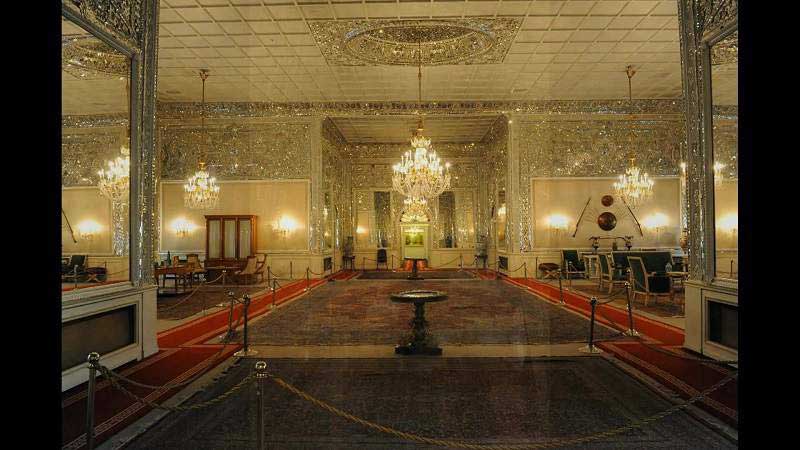
Mirrorwork inside the Niavaran Complex
Koushk-e Ahmad Shahi mansion has an area of about 800 square meters and was built at the end of the Qajar rule. This palace is built on two floors with a gable roof, and its exterior is brick and pea-colored. In the entrance area, they have designed stairs next to the tile pond that leads to the kiosk, and this entrance is located in the south of the mansion. Kushk Ahmad Shahi is located a short distance north of Niavaran Complex.
Jahan Nama Museum
Jahan-Nama Museum was established on the west side of Saheb Qaranieh Palace in 1355 to store works of art and gifts donated to Farah Diba. This museum has four halls on the ground floor and one hall in the basement. In the Jahannama museum, you can see works with a high extent of cultural and civilizational value. On the ceiling of the middle hall of the museum, there are paintings on wood with patterns of Shiraz flowers and chickens.
Among the works in this museum, we can mention prominent works by Iranian artists such as Parviz Tanavoli, Hossein Zendeh Roudi, Sohrab Sepehri, and Bahman Mohasses. Among the valuable works of world culture and art, we can mention the works of Picasso, Dali, Renoir, Gauguin, and Braque.
Clay pots and bronze figures of millennia BC and discovered works of world civilizations are another part of the historical objects of this museum. Clay containers holding the ashes of high-ranking people and elders of countries that have the custom of cremating the dead are also kept in the Jahan-Nama Museum. Jahannama Museum is one of the most valuable museums in Iran with lasting treasures.
Dedicated library museum
The exclusive library of Niavaran Complex was also established in 1355 in the northeast side and next to the exclusive palace of Niavaran. This library has an area of 770 square meters, two floors in the building, and a basement. The exclusive library of Niavaran Complex was designed for personal use, and its interior architecture uses mirrors and glass decorations. On the ceiling of the library, transparent cylinders have been installed to provide lighting.
In this building, many valuable historical works of local and foreign artists such as sculptures and paintings can be seen. There are also musical instruments in this library, which show the different use of this building in the past.
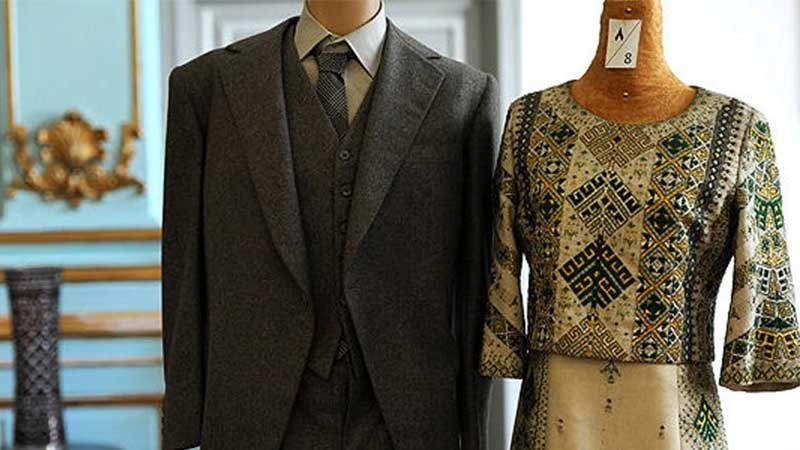
Museum in Niavaran Complex
An outstanding collection of manuscripts and paintings by famous painters are kept in the special library of Niavaran Complex:
There are about 23,000 printed copies and 16,000 titles in Niavaran’s dedicated library museum, including many first-edition books, specialized art books, authoritative encyclopedias, and the complete collection of Tehran University and Iran Culture Foundation publications. There is also an outstanding collection of paintings by famous artists and valuable manuscripts in this library.
The largest volume of books in this library are books on Iranian history, French literature, and art of painting. Among the books, there are works donated by the heads of countries and prominent writers of Iran and the world. Among these people, we can mention Parveen Etesami, Ali Naghi Waziri, Manouchehr Atashi, John F. Kennedy, Walt Disney, and Jawaher la’l Nehru.
In 1381, the books in this library were classified by an expert team. Visiting the exclusive library of Niavaran Complex is currently possible in the form of a museum, and this building is not used as a library.
Exclusive Car Museum of Niavaran Complex
Niavaran Complex Automobile Museum is located in the northwest of Niavaran historical-cultural complex and 500 meters from Niavaran exclusive palace. The area of this part of Niavaran complex is about 200 square meters and it was opened in the old garage of Niavaran Complex in 2011.
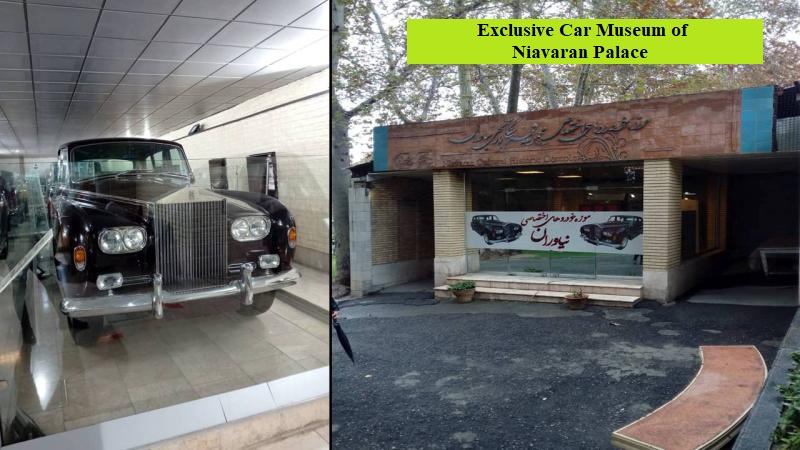
Exclusive Car Museum of Niavaran Complex
In this museum, cars belonging to the Pahlavi family, motorcycles of Pahlavi’s children, and car replicas are on public display. This museum was created in order to protect the remaining cars from the Pahlavi era and display the existing cars, and it has no specialized use in this field.
Inscriptions Museum Garden
Niavaran Inscription Museum Garden is located in the eastern part of Niavaran Garden and is a permanent exhibition of ancient Iranian stone inscriptions in the area of Niavaran Garden. This exhibition was established in 2007 by the efforts of Niavaran Historical-Cultural Collection and in cooperation with Language and Dialect Research Institute and Cultural Heritage Organization.
In this exhibition, there are 43 inscriptions from different historical periods from the time of the Medes, Assyrians, Sumerians, Elamites, and Sasanians. The most famous of these inscriptions are the Shapur and Ardashir inscriptions in the Naghsh-e Rostam, the inscription of Shapur I in the Naghsh-e Rajab, and the Kartir inscription in the Naghsh-e Rajab. Visiting this museum is highly appealing for archaeology enthusiasts and students.
Conclusion
The Niavaran Complex is undeniably one of Iran’s cultural and historical treasures, showcasing the rich history and culture of this beautiful land. From the magnificent royal palaces adorned with intricate and delightful decorations to the diverse museums and serene gardens, Niavaran Complex is a masterpiece of Iranian art and history. Exploring this site allows us to delve into the cultural richness of Iran. It serves as an exceptional destination for both leisurely visits and educational experiences, providing a glimpse into the cultural and historical background of the beloved nation of Iran. Enjoy the beauty and wealth of this complex and immerse yourself in an unforgettable historical journey.
Frequently asked questions
Where is Niavaran Complex?
Niavaran Complex is located in the northeast of Niavaran Garden and north of Tehran city. This palace is located in the southern part of Bahonar and Darabad streets. This garden can be accessed through Bahonar Street (Niavaran). Niavaran Square and Park are also located in the southern part of Niavaran Complex.
What does Niavaran mean?
In the past, today’s area of Niavaran was a village. The most famous village in that area was called “Gerde Wei” village, and a vast canebrake was located in the neighborhood of this village. By the order of Fath Ali Shah, they built a garden and summer palace in the place of the canebrake (in Persian it’s called Ney-zaar). For this reason, Fath Ali Shah’s summer garden was known as “Ney Avaran,” which eventually became “Niavaran.”
How many palaces are there inside Niavaran?
Today, Niavaran garden consists of Niavaran exclusive Palace, Sahebqaraniyeh Palace and Hozkhaneh Museum, Ahmed Shahi Kush, Jahan Nama Museum, Exclusive Library, Exclusive Car Museum, and the Garden of Inscriptions.
What are the visiting hours of Niavaran collection?
In spring and summer from 9 to 19 and in autumn and winter from 8 to 17.



